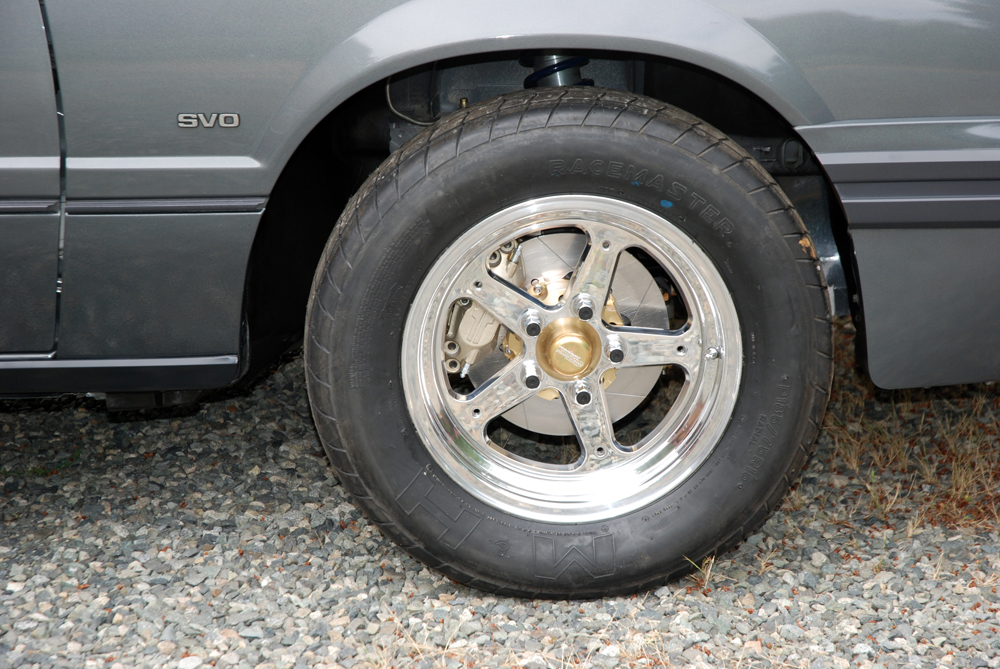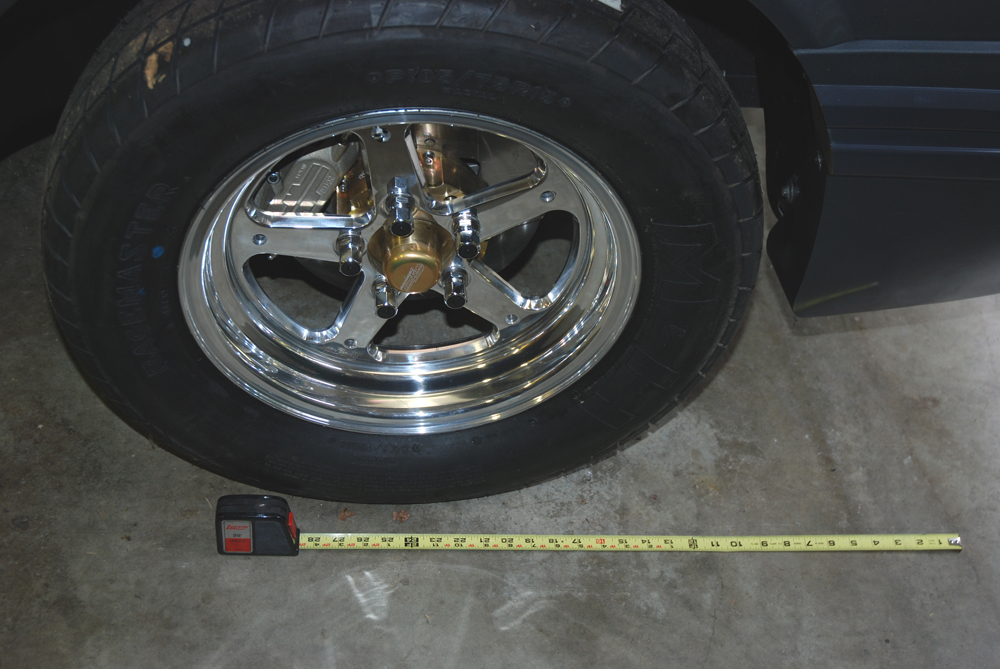
In the last issue, we took an involved look at the business end of the car – the tires. And we devoted that space specifically drag radials. But what about the front of the car?
On the nose of the car you have to ponder the responsibilities of the tire. Think about the duties of the front rolling stock, particularly for a car setup for radials: The front tires must be strong, they must provide directional control, they must be tough enough to resist flat-spotting, particularly when you engage the line lock. Keep in mind the front tires are responsible for the rollout, which obviously, is one a pretty big factor when you’re cutting a light. Sometimes it’s easy to forget the punishment the front tires take when you’re trying to slow a fast car down from warp speed – the nose of the car does a huge amount of the stopping. And finally, we’re also asking the front tires to have minimal rolling resistance. Whew. As you can see, we ask a lot from something that probably doesn’t get a lot of thought or respect.
Once upon a time, you could just pull into the corner gas station and ask for the cheapest, lightest, 7.60X15 tire they had and you called it day. That isn’t the case today. No one has heard of a 7.60X15 and in the case of the corner “gas station”, they probably don’t even sell tires any more. Or have the capability to mount them.
Back to today: Plenty of racing-oriented companies offer bias-ply front tires for drag racing. You have plenty of good choice. But try and find a reasonably tall, skinny front radial. It’s not so easy and even old VW Beetle radials are becoming tough to find (never mind that a tire designed for a bug has no place on a high speed heavy car, plus the fact they’re pretty short and are rollout compromised).
That’s where M&H Racemaster enters the equation. They offer several high performance front radials, based around a special tread design that provides for greater high-speed stability without the need for massive inflation pressures. The tire tread is designed to provide low rolling resistance on acceleration, and at the same time, provide a broader footprint while braking. The way the tread pattern works is to reduce the tendency to “walk” at the top end. Inside, these front radial tires are based around a 4-ply tread format (2 plies of polyester, two plies of fiberglass) coupled with a 2-ply polyester sidewall.
Tire weight is something most veteran racers ponder (a lot). How much do the M&H radial tires weigh? I set one of the M&H Racemaster front skins on a bathroom scale. It topped out at approximately 15 pounds (keeping in mind the scale isn’t exactly a high tech device). In comparison to other (readily available) bias ply bias ply racing fronts, one of the lightest is probably a 5.50X15 Moroso at 10.0-pounds. Meanwhile, Goodyear’s 27X4.5X15 Front Runner has an weight of 13.0-pounds. M&H front drag radial isn’t far off (and it’s light when you figure we’re comparing it to bias ply tires).
Rollout is critical. And it’s not that hard to figure out: If you increase the roll out, it means you probably have less chance at a red light, plus you can get a wee bit of a running start to cover the quarter mile. It’s not all roses though: With an increase in roll out, comes an increase in reaction times. That’s why many pro tree racers (Super classes) run a short tire (less roll out).
Lots of things influence rollout: Engine RPM, clutch or converter slippage, tire spin, engine performance, front tire diameter, suspension set up as well as staging techniques have an affect upon the overall reaction time. One of the easiest mechanical things to change is the front tire diameter. In order to increase the roll out distance, you can use larger diameter tires or stagger the front wheels. Most race sanctioning organizations lay out the amount of wheel base stagger they allow. This means that one tire (usually the right front) is positioned slightly behind the other. Because the light beam is broken by the front wheels at the starting line, wheel base stagger increases the roll out distance by the same amount.
Unless the car in question is a purpose built drag machine (dragster, altered, funny car, Pro Stocker, etc.), then it’s extremely difficult (if not down right impossible) to change the front tire stagger. Here you can increase rollout by increasing the diameter of the front tires. By increasing the size (diameter) of the front tire, the roll out is increased. Today, most street cars are fitted with super short low profile tires on all four corners and those tires are considerably shorter than an old fashioned 7.60X15-inch tire. By swapping to a taller tire the roll out is increased.
M&H Racemaster offers several skinny front drag radials (15-inch, 17-inch and 18-inch). All are similar in size
Diameter: 26-inches
Tread: 5.00-inches
Section Width: 6.7-inches
Rollout (Circumference): 81.7-inches
FYI, these tires are almost exactly the same height as a Goodyear 26X4.50-inch Front Runner. The roll out listed above is the total roll out of the tire. Basically, that’s how far the tire moves in one complete revolution.
It’s easy to see that front tires are probably the forgotten end of the race car. It’s also easy to see how important they really are. What’s on the nose of your car?





Leave a Reply